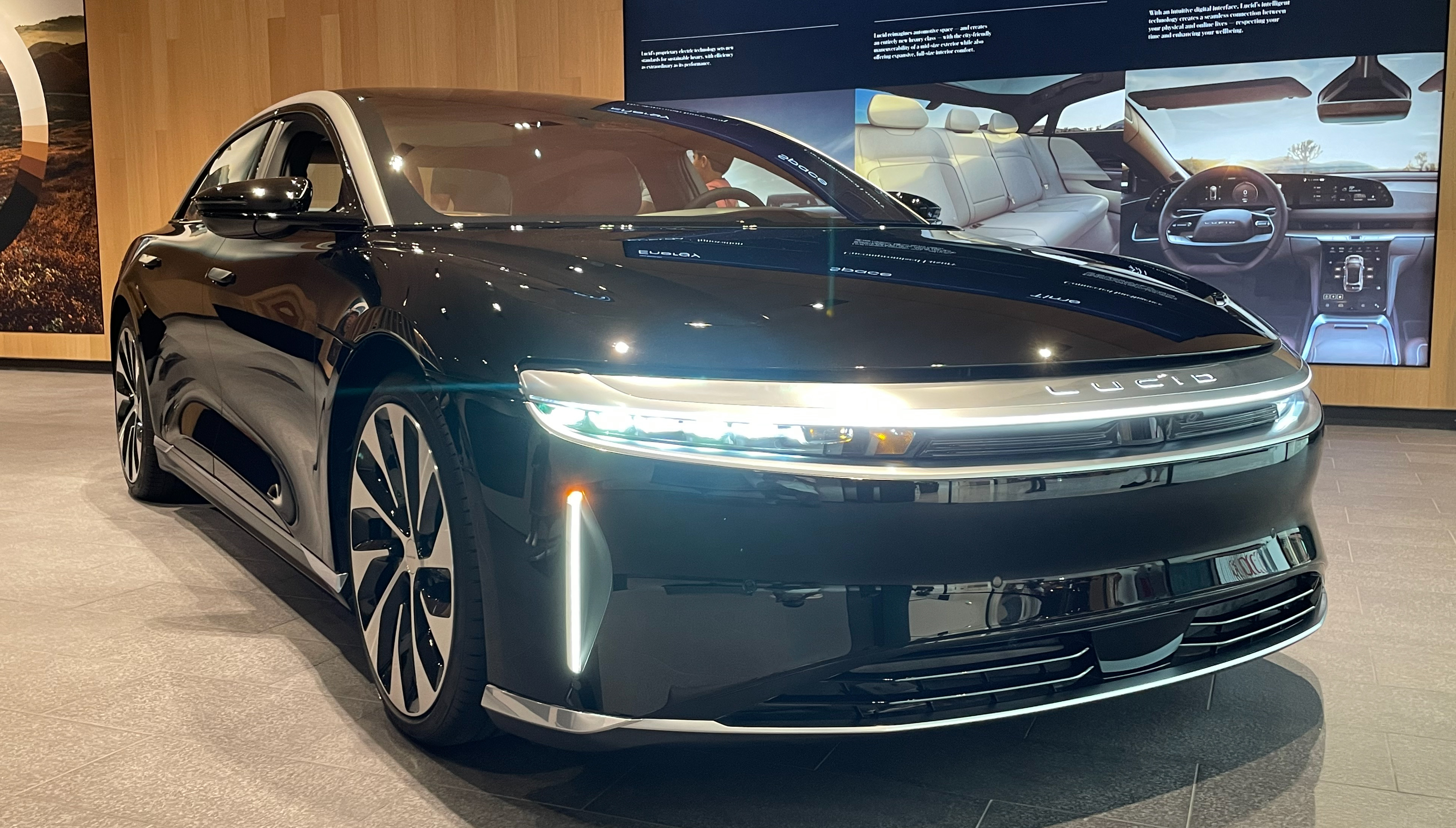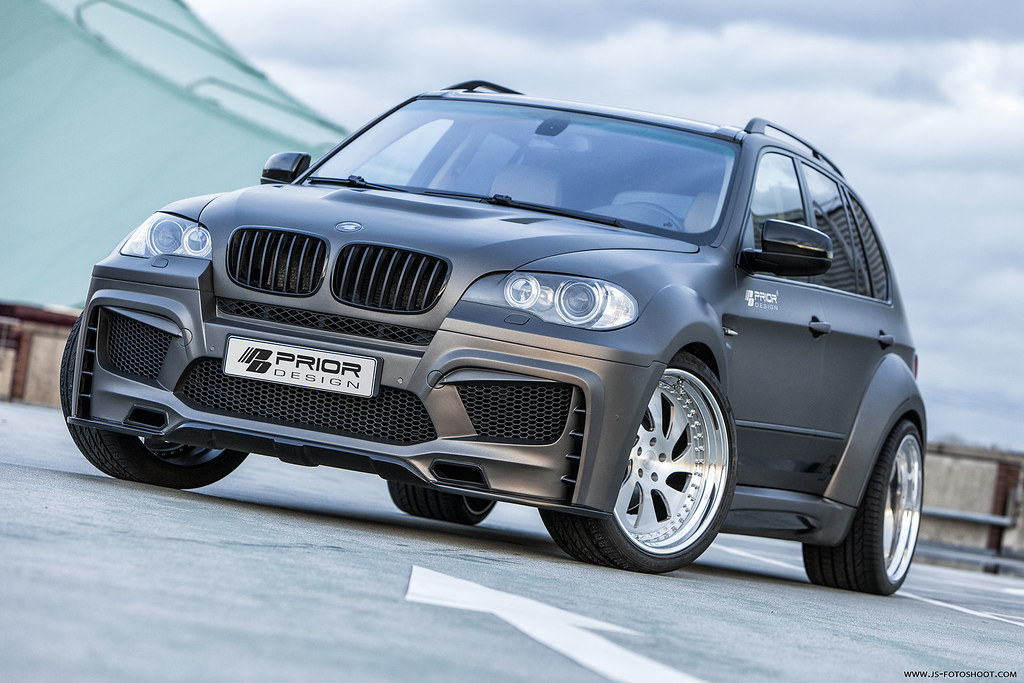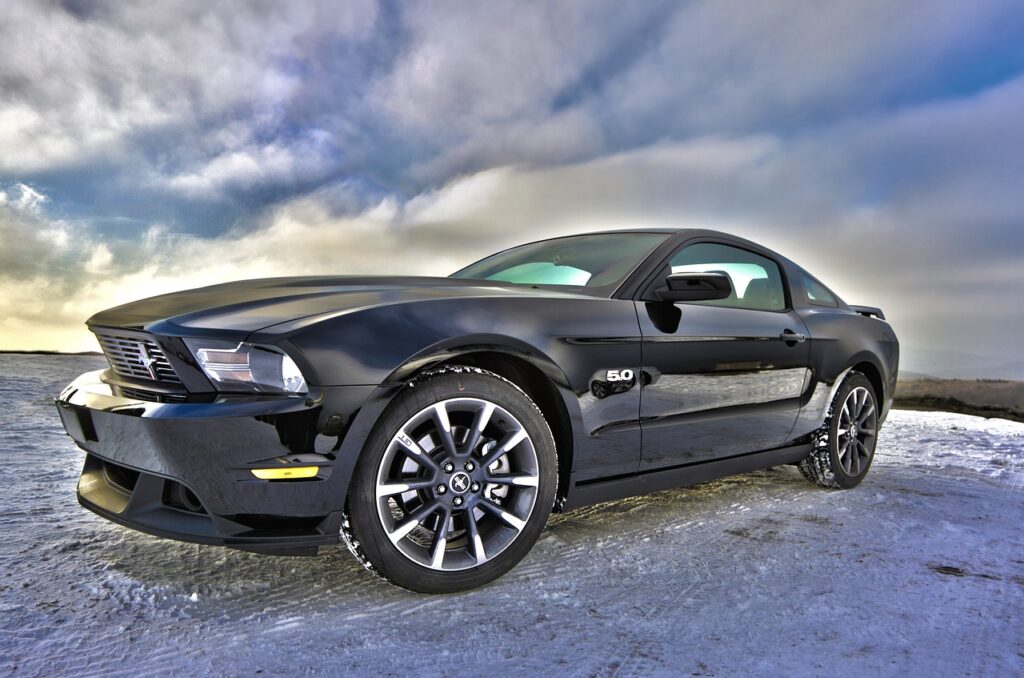
Rev your engines, gearheads and nostalgia lovers! We’re taking a high-octane cruise through the golden era of classic Chevys, where chrome gleamed like trophies, tailfins sliced through the air, and raw horsepower ruled the road. The 1960s was a truly pivotal decade for American car culture, with Chevrolet unequivocally leading the charge in style, power, and innovation, producing some of the most iconic and sought-after cars of the era. These aren’t just cars; they’re rolling time capsules, each one telling a story of an era when Detroit was the beating heart of American muscle, capturing the imagination of a nation.
This vibrant period saw a dramatic transformation in automotive design and engineering. Early in the decade, Chevy initially focused on full-size models like the Impala and Bel Air, emphasizing family-friendly features, soft rides, and roomy cabins at value-focused pricing. However, as the American car culture shifted, fueled by a new generation of drivers demanding speed, sharper handling, and bold styling, Chevrolet adapted at an incredible pace, stepping up to meet the growing competition from rivals and the burgeoning interest in racing and drag strips.
Today, classic car enthusiasts and collectors worldwide pay top dollar for these exceptional vehicles, not only for their immense nostalgic value but also for their enduring performance, timeless style, and often extreme rarity. In this in-depth exploration, we’ll buckle up and dive deep into six truly legendary Chevys from the 1960s—cars that have transcended mere transportation to become true pieces of automotive art, each now commanding prices of $200,000 or more. Get ready to explore the design, engineering, and sheer magnetism that make these machines the ultimate ‘garage gold.’
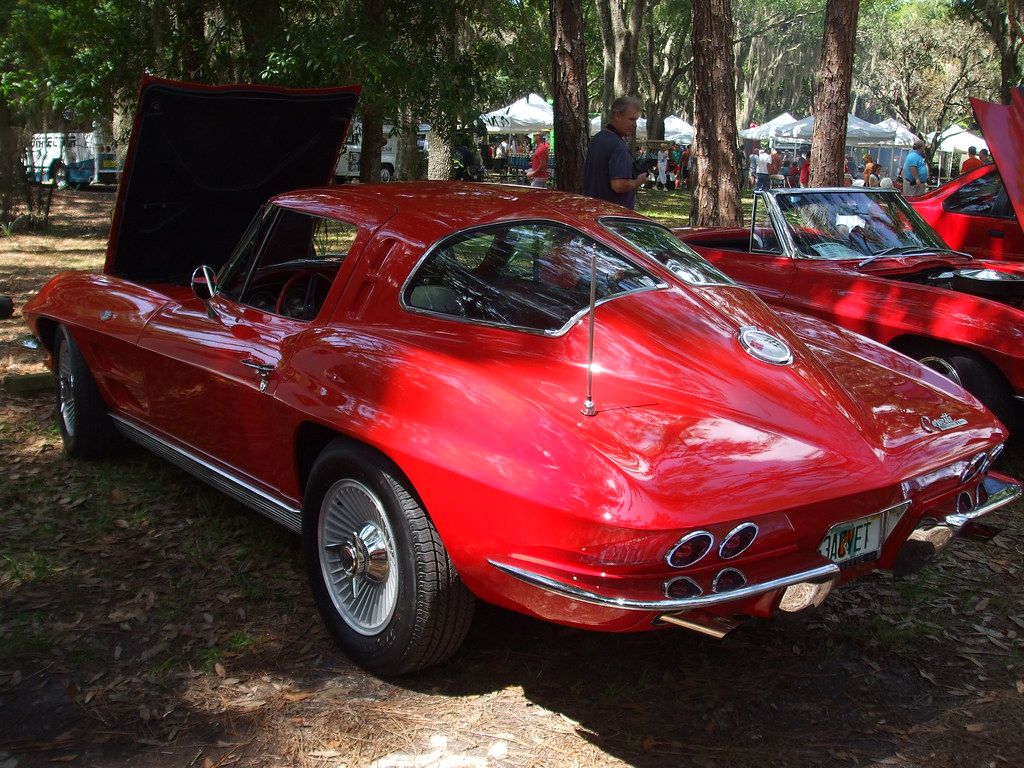
1. **1963 Chevrolet Corvette Sting Ray Split-Window Coupe**The 1963 Chevrolet Corvette Sting Ray Split-Window Coupe is an absolute icon, a car that needs little introduction to any serious automotive enthusiast. Its truly distinctive one-year-only split rear window, coupled with a strikingly futuristic design, instantly made it a standout classic from the moment it debuted. This model heralded a ground-up rebirth for the Corvette line, a bold new direction that redefined what an American sports car could be.
From its hidden headlights that seamlessly integrated into its sleek lines to its overall aggressive stance, the 1963 Sting Ray was a masterpiece of design and performance. It was a revolutionary vehicle, making waves in the automotive world much like the Beatles did in music that same year. Every curve and every detail seemed purpose-built to capture attention and hint at the performance capabilities lurking beneath its fiberglass skin, truly setting a new standard for American sports car aesthetics.
Under the hood, this collector’s dream offered formidable performance. It came with robust engine options, including the potent 327 V8, capable of pushing out an impressive 360 horsepower. This combination of groundbreaking design and serious power cemented its reputation, ensuring it was not just a beautiful car to look at, but also an exhilarating machine to drive. It provided the kind of visceral experience that cemented the Corvette’s place in the pantheon of performance vehicles.
Today, the allure of the 1963 Split-Window Coupe remains as strong as ever, if not stronger. Well-preserved models usually sell for anywhere from $150,000 to $250,000, with pristine examples often going for even more, sometimes considerably so. Finding a truly immaculate example of this beauty is akin to discovering rock ‘n’ roll gold, a rare and thrilling experience for any collector who appreciates automotive history and rarity. Its enduring appeal is a testament to its singular design.
This isn’t just a car; it’s a ticket to a bygone era where style and speed reigned supreme, capturing the spirit of innovation that defined early 1960s American engineering. The distinctive roof treatment, making the rear window smaller and the posts larger, gave it the appearance of a soft top convertible, a feature that buyers absolutely adored. Its popularity was so immense that sales increased a whopping 50% compared to previous Corvette models, a clear indication of its immediate impact and desirability.
Car Model Information: 2023 Jeep Wrangler Sahara
Name: Chevrolet Corvette (C2)
Caption: 1963 Chevrolet Corvette Sport Coupe
Manufacturer: Chevrolet
Aka: Chevrolet Corvette Sting Ray
Production: August 1962–July 1967
ModelYears: 1963–1967
Platform: Series 0800 (1962-1964),Series 194 (1965-1967)
Chassis: Body-on-frame
Assembly: St. Louis, Missouri
Predecessor: Chevrolet Corvette (C1)
Successor: Chevrolet Corvette (C3)
Class: Sports car
BodyStyle: Convertible (car),coupé
Layout: Front-engine, rear-wheel-drive layout
Engine: {{cvt,327,cuin,L,1,Chevrolet small-block engine (first- and second-generation)#327,V8 engine
Wheelbase: cvt
Length: cvt
Width: cvt
Height: cvt
Weight: cvt
Transmission: manual transmission,manual transmission,Powerglide
Related: Bill Thomas Cheetah
Designer: Larry Shinoda
Categories: 1960s cars, All articles needing additional references, All articles with specifically marked weasel-worded phrases, All articles with unsourced statements, Articles needing additional references from July 2024
Summary: The Chevrolet Corvette (C2) is the second-generation Corvette sports car, produced by the Chevrolet division of General Motors (GM) for the 1963 through 1967 model years.
Get more information about: Chevrolet Corvette (C2)
Buying a high-performing used car >>>
Brand: Chevrolet Model: Corvette Sting Ray
Price: $31,077 Mileage: 41,012 mi.
Read more about: Buckle Up, Boomers! 12 Legendary Rides from Your Youth That Are STILL a Total Blast to Drive

2. **1969 Chevrolet Corvette L88**The 1969 Chevrolet Corvette L88 was not merely a sports car; it was a purpose-built racing machine, engineered with an uncompromising focus on the track. As a result, it stands as one of the most powerful and coveted sports cars of the 1960s, a true testament to Chevrolet’s dedication to high-performance engineering. Every aspect of the L88’s design and construction was geared towards raw power and track domination.
Under the hood, the L88 packed an absolute beast: a 427-cubic-inch big-block engine. This wasn’t just any big-block; it featured aluminum heads and a host of other performance upgrades that unleashed incredible horsepower, specifically rated at 430 horsepower by Chevrolet. However, it’s widely accepted that the true output was significantly higher, thanks to components like a high-performance camshaft, solid lifters, and a high-rise aluminum intake manifold. This made it a formidable competitor on any circuit.
What truly sets the 1969 Corvette L88 apart, beyond its sheer power, is its extreme rarity. With only 116 units ever made across its production run, it’s not only one of the rarest Corvettes but also one of the most exclusive American muscle cars. This scarcity was largely due to its original intent: it was primarily aimed at serious racing teams and dedicated privateers rather than the casual consumer, making it a true connoisseur’s car from its inception.
Today, this exclusivity translates directly into stratospheric market values. These incredible machines regularly sell for over $500,000 at auction, with some pristine, well-documented examples topping an astounding $1 million. Owning a 1969 Corvette L88 is akin to possessing a piece of automotive legend, a tangible link to a golden age of racing where power and precision converged to create an undeniable icon of speed and engineering prowess.
Its racing credentials are, quite simply, awe-inspiring. The L88’s most notable early success was a first-place finish in the over-5.0 L GT class and an impressive tenth overall at the grueling 1967 12 Hours of Sebring endurance race. Furthermore, over its illustrious racing career, the L88 Corvette amassed nearly 400 podium finishes and celebrated over 150 wins, including an incredible streak of 52 consecutive victories. It was a true force of nature on the track, a legacy that continues to command respect and admiration.
Read more about: Buckle Up, Boomers! 12 Legendary Rides from Your Youth That Are STILL a Total Blast to Drive
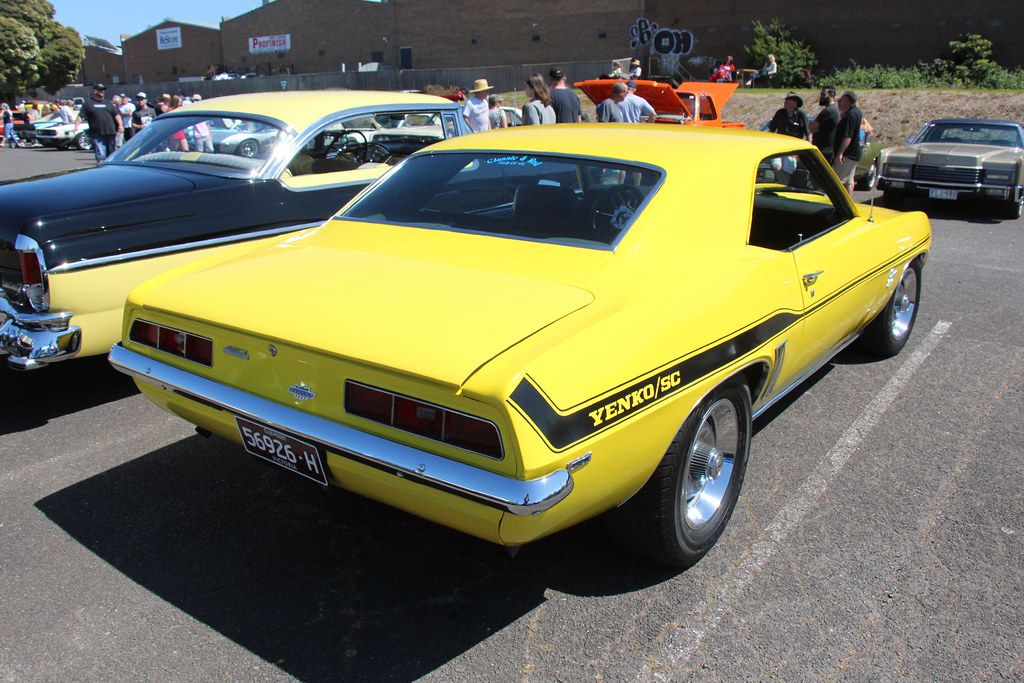
3. **1969 Chevrolet Yenko Camaro**The 1969 Chevrolet Yenko Camaro is the result of what happens when exceptional muscle meets pure magic, a testament to the vision of legendary dealer and racer Don Yenko. Dissatisfied with factory performance offerings, Yenko famously modified standard Camaros into high-performance beasts, creating a legacy that continues to captivate collectors. This was not merely a performance package; it was a full transformation, imbued with Yenko’s racing expertise and passion for speed.
At the heart of the Yenko Camaro was a powerhouse 427 cubic inch V8 engine, a unit that Chevrolet hadn’t officially offered in the Camaro due to internal policies. Yenko circumvented these rules by ordering Camaros with a smaller 396 engine and then swapping in the larger, more powerful 427s, alongside numerous racing upgrades. These modifications included heavy-duty suspension components, improved braking, and custom Yenko badging, transforming the Camaro into a bona fide track weapon and a street legend.
This bespoke approach to performance resulted in an extremely rare vehicle. Approximately only 370 Yenko Camaros were produced across the years 1967 and 1969, with the 1969 model year representing a significant, highly prized portion of that limited run. This scarcity is a primary factor in its immense value today, making it a true collector’s unicorn. Each Yenko Camaro was a hand-built marvel, a unique expression of high-performance engineering that went beyond standard production lines.
Today, the 1969 Yenko Camaro occupies a rarefied space in the classic car market. These exceptional machines typically sell for $250,000 or more at auction, with pristine, well-documented examples often fetching significantly higher sums. Their combination of limited production, race-bred performance, and the iconic Yenko nameplate ensures their status as blue-chip investments for serious collectors. It’s an undisputed piece of ‘garage gold’ that continually appreciates in value.
This legendary beast, boasting its potent 427 V8 and formidable racing pedigree, has solidified its place as the poster child for performance and style in the muscle car realm. Many enthusiasts describe it as the “James Bond of cars”—dressed to impress, incredibly capable, and always ready for action, whether on the drag strip or cruising the boulevard. Owning a Yenko Camaro is more than just owning a car; it’s an exhilarating ride back in time, allowing one to feel the raw power and experience the thrill of a bygone era with vintage flair.
Continuing our journey through the most valuable ’60s Chevys, this section delves into three more high-performance legends, each a testament to Chevrolet’s relentless pursuit of power and engineering excellence. These machines, much like their predecessors, represent the pinnacle of American muscle, commanding respect and significant value in today’s collector market, and embodying the very definition of ‘garage gold.’
Car Model Information: 2018 Chevrolet Camaro 1LS
Name: Chevrolet Camaro
Manufacturer: Chevrolet
Production: 1966–2002,2009–2023
ModelYears: 1967–2002,2010–2024
Class: Pony car
BodyStyle: coupe,convertible
Platform: GM F platform,GM Zeta platform,GM Alpha platform
Layout: Front-engine, rear-wheel-drive layout
Categories: 1970s cars, 1980s cars, 1990s cars, 2+2 coupés, 2000s cars
Summary: The Chevrolet Camaro is a mid-size American automobile manufactured by Chevrolet, classified as a pony car. It first went on sale on September 29, 1966, for the 1967 model year and was designed to compete with the Ford Mustang. The Camaro shared its platform and major components with the Firebird, produced by General Motors’ Pontiac division that was also introduced for the 1967 model year.
Four distinct generations of the Camaro were developed before production ended in 2002. The nameplate was revived on a concept car that evolved into the fifth-generation Camaro; production started on March 16, 2009.
Production of the sixth generation of the Camaro ended in December 2023, for the 2024 model year.
Get more information about: Chevrolet Camaro
Buying a high-performing used car >>>
Brand: Chevrolet Model: Camaro
Price: $18,785 Mileage: 69,196 mi.
Read more about: Beyond the Legends: Unearthing 12 Special-Edition Muscle Cars That Demand Recognition
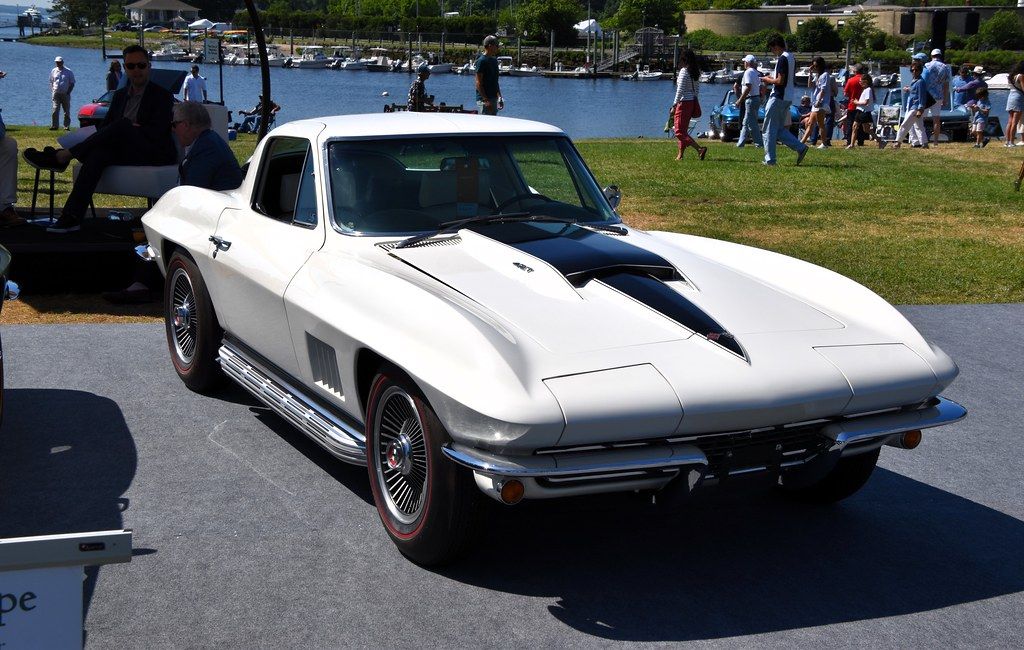
4. **1967 Chevrolet Corvette 427**The 1967 Chevrolet Corvette 427 stands as a masterful culmination of the second-generation, or C2, Corvette’s iconic design and formidable performance capabilities. This model year represented the final iteration of the Sting Ray, a period during which Chevrolet refined an already legendary platform to near perfection. While the L88 variant, known for its uncompromising race-bred focus, was exceedingly rare, the general 1967 Corvette equipped with the 427 cubic inch engine offered an equally thrilling, albeit more street-oriented, high-performance experience, blending raw power with an undeniable sense of elegance.
At the heart of this automotive icon was the renowned 427 cubic inch (7.0 L) V8 engine, available in several potent configurations. Enthusiasts could choose from the robust L36, delivering a stout 390 horsepower, or opt for the formidable L71 Tri-Power setup, which employed three two-barrel carburetors to unleash a staggering 435 horsepower. These big-block options weren’t just about impressive numbers; they provided a visceral, seat-of-your-pants acceleration and a distinct, authoritative exhaust note that instantly commanded attention, making every drive an event.
Visually, the 1967 Corvette 427 boasted clean, aggressive lines that perfectly captured the essence of a high-performance American sports car. Subtle yet impactful styling cues, such as the redesigned fender vents, contributed to its streamlined appearance. The Sting Ray’s signature hidden headlights and muscular stance were perfectly complemented by the sheer grunt of the 427 powerplant, creating a harmonious balance between breathtaking form and exhilarating function. This was a machine engineered not just to look fast, but to deliver on that promise with unwavering authority.
What truly solidified the 1967 427’s place in automotive history was its ability to balance track-ready performance with a degree of road manners, making it a dream for both spirited driving and the occasional cruise. It was a testament to Chevrolet’s engineering prowess, demonstrating how a powerful engine could be integrated into a sophisticated chassis to create a truly balanced and engaging driving experience. This synthesis of speed, handling, and timeless aesthetics ensured its immediate and lasting appeal among driving enthusiasts.
Today, the enduring allure of the 1967 Corvette 427 continues to resonate profoundly within the collector car market. Its status as a highly capable, exquisitely styled, and powerfully engineered machine ensures its position among the most valuable ’60s Chevys. Well-preserved, numbers-matching examples of these high-performance Sting Rays consistently command prices well over $200,000 at auction, with particularly rare or documented configurations fetching even higher sums. It is, undeniably, a prized possession and a tangible connection to a golden age of American performance.
Car Model Information: 2023 Jeep Wrangler Sahara
Name: Chevrolet big-block engine
Caption: 454 big-block in a 1970 Chevrolet Chevelle SS
Manufacturer: General Motors
Production: 1958–present
Configuration: Naturally aspirated
Valvetrain: Overhead valve engine
Block: Cast iron
Head: aluminum
Fueltype: Gasoline
Fuelsystem: Carburetor,Fuel injection
Coolingsystem: Radiator (engine cooling)
Bore: {{cvt,3.935,in,mm,lk=on
Stroke: {{cvt,3+1/4,in,1
Displacement: {{cvt,348,cuin,L,1,lk=on
Compression: 8.5:1, 9.0:1, 10.25:1, 11.0:1, 12.0:1, 12.5:1, 13.5:1
Power: cvt
Torque: cvt
Weight: cvt
Categories: All articles with dead external links, All articles with unsourced statements, Articles with dead external links from July 2023, Articles with short description, Articles with unsourced statements from April 2025
Summary: The Chevrolet big-block engine is a series of large-displacement, naturally-aspirated, 90°, overhead valve, gasoline-powered, V8 engines that was developed and have been produced by the Chevrolet Division of General Motors from the late 1950s until present. They have powered countless General Motors products, not just Chevrolets, and have been used in a variety of cars from other manufacturers as well – from boats to motorhomes to armored vehicles.
Chevrolet had introduced its popular small-block V8 in 1955, but needed something larger to power its medium duty trucks and the heavier cars that were on the drawing board. The big-block, which debuted in 1958 at 348 cu in (5.7 L), was built in standard displacements up to 496 cu in (8.1 L), with aftermarket crate engines sold by Chevrolet exceeding 500 cu in (8.2 L).
Get more information about: Chevrolet big-block engine
Buying a high-performing used car >>>
Brand: Chevrolet Model: Corvette 427
Price: $31,077 Mileage: 41,012 mi.
Read more about: The Road to Riches: 15 Classic Cars Skyrocketing in Value for Savvy Enthusiasts

5. **1969 Chevrolet Corvette ZL1**When we delve into the realm of truly legendary and ultra-exclusive muscle cars, the 1969 Chevrolet Corvette ZL1 emerges as an almost mythical beast, conceived at the absolute pinnacle of the performance era. This was not merely an option package; it was a bespoke, no-compromise racing machine, so extreme in its conception and execution that only two units were ever officially built for sale to the public. Its astonishing rarity, combined with its revolutionary lightweight engineering, solidifies its status as one of the most formidable American muscle cars ever produced, truly the holy grail for Corvette aficionados.
At the absolute core of the ZL1’s unparalleled reputation was its revolutionary all-aluminum 427 cubic inch (7.0 L) V8 engine. Unlike any other 427 of the era, this powerplant was constructed almost entirely from aluminum, a groundbreaking achievement that drastically reduced the engine’s weight by approximately 100 pounds compared to its iron-block counterparts, all while maintaining immense power. Officially rated at 430 horsepower by Chevrolet, automotive insiders and racers widely acknowledged its true output to be closer to 500 horsepower or even significantly more, making it an undeniable force on any competitive track. This engine was a marvel of engineering, a direct response to Chevrolet’s desire to push the absolute limits of performance in competitive racing.
Beyond its groundbreaking aluminum engine, the ZL1 was equipped with a comprehensive suite of heavy-duty, race-bred components meticulously designed for maximum durability and unyielding performance. It featured a robust Muncie M22 “Rock Crusher” four-speed manual transmission, renowned for its exceptional strength and ability to handle the colossal torque output. Performance-oriented rear axle ratios ensured optimal power delivery and blistering acceleration, while its independent front and rear suspension systems were specifically tuned for superior handling and control, making it equally adept at dominating drag strips and conquering challenging road course competition. Every single aspect of the ZL1 was engineered with a singular purpose: victory.
The very raison d’être for the ZL1’s existence was competitive racing, and its featherlight construction, when combined with its monstrous power, made it an immediate and dominant force in its class. Its creation was a bold testament to Chevrolet’s audacious approach to performance, offering a vehicle that, despite its street-legal status, was undeniably and unequivocally intended for the most demanding circuits. This unparalleled focus on racing prowess, coupled with its extreme scarcity, ensures its legendary status among collectors.
The profound rarity and the hardcore racing pedigree of the 1969 Corvette ZL1 mean that when one of these elusive machines does surface for sale—a truly infrequent event—it commands staggering figures. These automotive masterpieces routinely soar into the multi-million dollar range at auction, making the ZL1 arguably the ultimate piece of ‘garage gold’ for any serious collector or museum. Owning a ZL1 is not just about possessing a car; it’s about owning a significant, game-changing chapter in American automotive history, a tangible link to an era of unbridled engineering ambition.
Car Model Information: 2017 Maserati Levante S
Name: Chevrolet Corvette (C3)
Caption: 1973 Chevrolet Corvette Stingray
Manufacturer: Chevrolet
Aka: Chevrolet Corvette Stingray,(1968–76)
Production: August 1967 – October 1982
ModelYears: 1968–82
Platform: General Motors Z platform
Assembly: St. Louis Truck Assembly,Bowling Green Assembly Plant
Predecessor: Chevrolet Corvette (C2)
Successor: Chevrolet Corvette (C4)
Class: Sports car
BodyStyle: Convertible (car),coupé
Layout: Mid-engine design
Engine: {{cvt,305,cuin,L,1,Chevrolet small-block engine (first- and second-generation)#LG4,V8 engine
Transmission: manual transmission,manual transmission,Turbo-Hydramatic,Automatic transmission
Wheelbase: cvt
Length: {{cvt,182.1,in,mm,0
Width: {{cvt,69.2,in,mm,0
Height: {{cvt,47.8,in,mm,0
Weight: cvt
Designer: GM & Chevrolet design staff,Zora Arkus-Duntov,Bill Mitchell (designer)
Categories: 1970s cars, 1980s cars, All articles with unsourced statements, Articles with short description, Articles with unsourced statements from April 2024
Summary: The Chevrolet Corvette (C3) is the third generation of the Corvette sports car that was produced from 1967 until 1982 by Chevrolet for the 1968 to 1982 model years. Engines and chassis components were mostly carried over from the previous generation, but the body and interior were new. It set new sales records with 53,807 produced for the 1979 model year. The C3 was the second Corvette to carry the Stingray name, though only for the 1969–76 model years. This time it was a single word as opposed to Sting Ray as used for the 1963–67 C2 generation. The name was then retired until 2014 when it returned with the release of the C7.
The most expensive Corvette C3 to sell in history was a 1969 L88 Lightweight, one of only four lightweight L88s to be produced. It was sold by Barrett-Jackson in January 2014 for $2,860,000 (£1,728,941).
Get more information about: Chevrolet Corvette (C3)
Buying a high-performing used car >>>
Brand: Chevrolet Model: Corvette ZL1
Price: $20,995 Mileage: 62,696 mi.
Read more about: Unveiling American Automotive Excellence: A Deep Dive into Chevrolet’s 12 Most Legendary Models of All Time

6. **1969 Chevrolet Chevelle SS 396 (L78/L89 versions)**The 1969 Chevrolet Chevelle SS 396 stands as an undisputed titan of the muscle car era, embodying the raw power, aggressive styling, and undeniable street presence that defined the decade. While the Chevelle SS 396 enjoyed immense popularity in numerous configurations, it is specifically the high-performance L78 and the exceptionally rare L89 versions that catapult this model into the uppermost echelon of highly coveted collector vehicles. These particular variants were not merely designed to turn heads; they were meticulously engineered to dominate the drag strip and command unwavering respect on the street, unequivocally cementing the Chevelle’s legendary status.
At the absolute heart of the SS 396 L78 and L89 models was a potent 396 cubic inch (6.5 L) V8 engine, but unlike its lesser counterparts, it was meticulously configured for maximum output and unadulterated performance. The L78, specifically, was officially rated at a formidable 375 horsepower, a figure achieved through a potent combination of a high-rise aluminum intake manifold, a Holley 780 CFM four-barrel carburetor, rectangular port heads, and an aggressively profiled solid lifter camshaft. This sophisticated setup ensured blistering acceleration and a broad, thrilling powerband that resonated deeply with performance drivers. The even rarer L89 option took this performance ethos a significant step further by incorporating lightweight aluminum heads to the already potent L78 engine, which not only further reduced critical front-end weight but also enhanced the engine’s thermal efficiency and overall performance, making it an engineering marvel of its time.
Beyond the monstrous engines, the 1969 Chevelle SS 396 L78/L89 models were comprehensively engineered for serious, uncompromising performance from the ground up. They came equipped with heavy-duty suspension components, which included significantly stiffer springs, reinforced control arms, and a notably beefier front sway bar. These critical chassis upgrades dramatically improved handling dynamics and overall stability, allowing the Chevelle to effectively transfer its immense power to the pavement with greater precision and control, even under aggressive driving conditions. The aggressive and iconic styling of the 1969 Chevelle, particularly its highly prized twin-headlight front end and bold, muscular design, perfectly complemented the raw, untamed performance capabilities lurking beneath its impeccably styled sheet metal.
The 1969 model year for the Chevelle SS also featured subtle yet effective refinements that enhanced both its aesthetic appeal and aerodynamic profile. The purposeful hood with its functional cowl induction system, for example, wasn’t just for show; it actively fed cooler, denser air directly to the carburetor, optimizing combustion and further boosting performance under load. This blend of purposeful design and functional engineering underscored the Chevelle SS 396’s commitment to delivering an authentic high-performance experience, both visually and dynamically, making it a true dual threat on the road.
The enduring desirability and astronomical value of the 1969 Chevelle SS 396, especially in its L78 and L89 iterations, cannot be overstated in today’s collector market. While well-maintained standard SS 396 examples can command prices starting around $75,000, these exceptionally rare, high-performance variants easily fetch significantly more at auction, often soaring well into the mid-six-figure range and beyond for pristine, numbers-matching, and meticulously documented cars. Their extremely limited production numbers—especially the L89 with its groundbreaking aluminum heads—combined with their unadulterated, race-bred performance and iconic styling, firmly establish them as absolute blue-chip investments. They represent the very pinnacle of Chevelle muscle, offering an exhilarating and authentic ride back to a golden age of American automotive power and passion.
Car Model Information: 2017 Maserati Levante S
Name: Chevrolet Chevelle
Caption: 1970 Chevrolet Chevelle SS 396 Sport Coupe
Manufacturer: Chevrolet
Production: 1963–1977
ModelYears: 1964–1977
Class: Mid-size
Platform: GM A platform (RWD)
Layout: FR layout
Successor: Chevrolet Malibu
Categories: 1970s cars, All articles needing additional references, All articles that may contain original research, All articles with specifically marked weasel-worded phrases, All articles with unsourced statements
Summary: The Chevrolet Chevelle is a mid-sized automobile that was produced by the Chevrolet division of General Motors (GM) in three generations for the 1964 to 1977 model years. Part of the GM A-body platform, the Chevelle was one of Chevrolet’s most successful nameplates. Body styles included coupes, sedans, convertibles, and station wagons. The “Super Sport” versions were produced through the 1973 model year and Lagunas from 1973 through to 1976.
After a four-year absence, the El Camino was reintroduced as part of the new Chevelle lineup in 1964.
From 1964 to 1969, GM of Canada sold a modified version of the Chevelle that included a Pontiac-style grille, and a LeMans instrument panel, marketed as the Beaumont.
The Malibu was the top-of-the-line model to 1972, and completely replaced the Chevelle nameplate starting with the redesigned, and downsized 1978 model year.
Get more information about: Chevrolet Chevelle
Buying a high-performing used car >>>
Brand: Chevrolet Model: Chevelle SS 396
Price: $20,995 Mileage: 62,696 mi.
As our high-octane cruise through the golden era of 1960s Chevrolet performance draws to a close, it becomes abundantly clear that this decade was more than just a period of automotive manufacturing; it was a profound epoch of engineering innovation, audacious design, and unbridled passion. The six legendary Chevys we’ve meticulously explored—from the distinctive 1963 Corvette Split-Window that redefined sports car aesthetics, to the ultra-rare and track-focused 1969 Corvette ZL1, and the commanding street presence of the 1969 Chevelle SS 396 L78/L89—are far more than mere vehicles. They are rolling testaments to American ingenuity, powerful symbols of an era when horsepower ruled the roads, and design pushed the very limits of what was possible. These magnificent machines, now valued at $200,000 or more, continue to ignite the imagination of enthusiasts and collectors worldwide, unequivocally proving that true ‘garage gold’ isn’t solely about monetary value. It’s about the enduring legacy, the thrilling, visceral experience they offer, and the indelible mark they etched upon the tapestry of global car culture. The thunderous roar of their V8s echoes through time, a powerful and poignant reminder of an era that will forever define American muscle.

